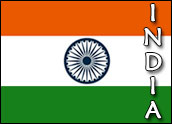
What infectious disease killed more adults and young people around the globe at the end of the 20th century than any other? What resurgent disease has become resistant to each new drug developed since the discovery of streptomycin in 1944? What disease kills one third of all people who die with AIDS?
The answer is tuberculosis, also called TB, consumption, or the white plague. A more important question is: What can be done to protect you? And are you already infected?
Although you might not be infected, you undoubtedly know people who are. You might be working with them, flying on airplanes with them and living with them. They could be in your family, in your office and in your heart.
Third of World Infected
The independent aid group Mdecins Sans Frontires (MSF, a.k.a. Doctors Without Borders) estimates that up to one-third of the world’s population might be infected with the tubercule bacillus. In most of those who are infected, TB is latent and might remain so forever, with most infected people never displaying any symptoms.
March 24 of every year is World TB Day. It is a day to recognize the impacts of tuberculosis and to motivate every one of us to help eliminate it. Even though TB is most common in underdeveloped areas and among people with poor living conditions, being well off or living in a Western country will not protect you.
TB is not just a public health issue. It is also a business issue. TB decreases productivity and damages the economy. It is an employer’s responsibility, and an employee’s right to be assured of a healthy working environment.
How It Spreads
TB spreads through breathing. It spreads easiest in small, poorly ventilated environments where people spend a lot of time around each other, like some of the software firms I’ve seen in Asia. What is your office like?
People with active TB (as compared to those who have a latent infection) can exhale TB bacteria as microscopic droplets when they speak, cough or sneeze. The droplets usually dry out quickly, but TB bacteria can remain in the air for hours. TB bacteria in the air can be killed by ultraviolet light, including sunlight.
In the U.S., TB bacteria can often be found in prisons and homeless shelters, where people spend a lot of time in enclosed spaces and where their immune systems are depressed. The people who contract TB in those environments might be the least likely to participate in treatment long enough for their infections to be adequately controlled. By not staying on TB medications long enough, TB becomes resistant to those medications.
TB medications are not supposed to be taken by individuals who are drinking alcohol, in part because of liver damage. People who are in homeless shelters or who have been recently released from prison are often disposed to drink lots of alcohol, which increases their risks from TB.
Once patients with active TB begin taking medications, they might begin to feel better and might therefore decide to stop taking further medications, even though they are still actively infected. This is worse than never taking medications at all, because the disease then becomes resistant to those medications.
Progress of the Disease
Once TB bacteria are inhaled and reach the lungs, a small infection might occur that is unlikely to have noticeable symptoms. After this first infection, called a primary infection, TB bacteria might spread through the bloodstream. Months or years after having a primary infection, TB in an infected person can become active, especially if their immune system is weakened.
Although the lungs are a popular location for TB infections, such infections can spread through the blood to all parts of the body. Active TB can be developed in the lymph system, bones, the urinary tract, sexual organs, the intestines and the skin.
Typical symptoms of active TB are a chronic or persistent cough and lots of spit. At an advanced stage, there will be blood in the spit. Other symptoms include fatigue, loss of appetite, weight loss, fever and sweating at night. Those other symptoms can be found in diseases such as bronchitis, pneumonia, lung cancer and lung damage from smoking.
After three weeks of coughing and spitting, a doctor’s visit might be in order for an X-ray, lab analysis of spittum, or a skin reaction test called the Mantoux test.
Ineffectiveness of Vaccinations
In Britain, it is national policy for all school children at age 12 to 13 to receive a vaccination called the BCG or bacille Calmette-Guerin. Growing up in British Hong Kong, BCGs did not prevent one of my siblings from contracting TB of the lymph system (manifested by large oozing sores) and subsequently passing the infection to another sibling.
A BCG guidance document published by the National Tuberculosis Center at the New Jersey Medical School, states: “In a recent meta-analysis, data from all clinical trials of BCG were combined and analyzed. The protective effect of BCG was found to be 50 percent against all forms of TB and 64 percent against TB meningitis.”
In the U.S., protection against TB focuses on testing and treatment, not vaccinations. Vaccinated people can show false positives that complicate proper diagnosis and treatment. Active TB might be less likely to be properly detected in people who have been vaccinated. Vaccinations might be ineffective for some strains of TB, not fully effective for others, and even when they do work, they do not protect everyone.
Strategies for avoiding TB focus on keeping one’s immune system strong, early detection, and general public health measures such as well ventilated workplaces and residences.
How To Protect Yourself
The best way to protect yourself is to make sure that everyone else has access to TB detection and other health care services, access to medications, and that TB medications are properly administered for the full length of treatment.
Early detection and treatment are important because individuals with active TB can pass the disease along to others. Helping others to stay healthy and TB free can and should be seen as self-interested self-preserving behavior, rather than benign charity. If we fail to turn the tide of TB, it could come after us.
Given the susceptibility of individuals with depressed immune systems to contracting TB, control efforts need to include the provision of health care and managed TB treatment to the homeless, prisoners, alcoholics, people with HIV and AIDs, and to health care providers themselves.
The best way to prevent drug-resistant TB from spreading is for patients to be actively observed taking their medications every single day. This costs money, but the costs of not using active observation are incalculable.
Businesses have a role to play. For example, a business alliance called Philippine Business for Social Progress (PBSP) urges its corporate members to institute Directly Observed Treatment Short Course (DOTs) programs for employees, contractors, family members, and communities at large. Another good example is the pharmaceutical firm Novartis, which in December 2003 agreed to donate five years worth of TB medications for half a million patients around the world, and to provide funds for logistics and independent quality control.
Support for government and nonprofit organizations is vital if we are going to be effective in stopping TB and the conditions that make TB transmission likely around the globe. World TB Day on March 24 is a good day to talk about TB wherever you go.
The best way to protect yourself against TB is to make sure that everyone is protected. For additional information, consult your physician or see the U.S. Centers For Disease Control’s homepage for TB at http://www.cdc.gov/tb
Anthony Mitchell , an E-Commerce Times columnist, has beeninvolved with the Indian IT industry since 1987, specializing through InternationalStaff.net in offshore process migration, call center program management, turnkey software development and help desk management.

















































This article on TB is outstanding.
TB is one of the greatest threats to world security and health.
Our group have done alot of work in this area and believe we have developed a new drug which allows the mass treatment of TB.
Below is a summary of our work in TB and other infections.
Best wishes
Eugene Sherry MD
-Tuberculosis
By using an new delivery system we are devised for direct inhalation we have
treated 10 patients in Fiji with complete recovery after 10 days of
treatment against the 6 months DOT system.
Full scale trials are being planned for China..
This is a new ‘ cure for TB’ which is simple and cheap to use. It allows the
mass treatment of TB patients( as in prisons eg Russia).i
Papers published.
Sherry E, Reynolds M, Sivananthan S, Mainawalala S, Warnke PH
Inhalational phytochemicals as possible treatment for pulmonary
tuberculosis: two case reports.
Am J Infect Control. 2004 Oct;32(6):369-70. No abstract available.
Sherry E, Warnke PH.
Successful use of an inhalational phytochemical to treat pulmonary
tuberculosis: a case report.
Phytomedicine. 2004 Feb;11(2-3):95-7.
Here is a summary of my other work undertaken in Kiel (Germany), Malaysia
and Australia..
KielMix is based on Essential Oil extracts from Plants that are Natives of
Australia.
We can supply this to the UK and Europe as required.
-MRSA spray
We have trialed this widely in Australia and Malaysia for the use of MRSA
infected wounds.
It works where antibiotics have failed.
Papers published.
Sherry E, Warnke PH. ? The End of MRSA; Eucalyptus Leaf Oil, PolytoxinolTM,
as a New Topical Antibacterial Agent Introduction. American Academy of Ortho
Surgeons, 69th Annual Meeting, Feb 2002 Dallas Texas
Sherry E, Warnke PH, Boeck H. Percutaneous treatment of chronic MRSA
osteomyelitis with a novel plant-derived antiseptic. BMC Surg. 2001;1(1):1.
Epub 2001 May 16.
Sherry E, Boeck H, Warnke PH Topical application of a new formulation of
eucalyptus oil phytochemical clears methicillin-resistant Staphylococcus
aureus infection.
Am J Infect Control. 2001 Oct;29(5):346. No abstract available.
-Diabetic Gangrene Spray
Currently being used in Malaysia, Fiji, Kiel and Australia for application
immediately after debriding the gangrenous extremities of diabetic feet.
We are able to save patients from AM putations.
Paper published.
Sherry E, Warnke PH, Sivananthan S, Eslick GD. Topical phytochemicals used
to salvage the gangrenous lower limbs of type 1 diabetic patients. Diabetes
Res Clin Pract 2003; 62(1): 65-6.
-Palliative Care( Cancer) patients
Mostly Oral, mouth and neck applications. We can not cure the cancer, but
patients using this, under the control of the University of Kiel, have been
able to go home to die with dignity. All smell has gone, they are off anti
biotic’s and off painkillers. Used as an aerosol spray.
Same treatment techniques now being used in 6 hospitals in Europe.
Papers published.
Warnke PH, Sherry E et at. "Tumour smell reduction with antibacterial
essential oils"
Cancer. 2004 Feb 15;100(4):879-80.
PH Warnke, E Sherry et al. Antibacterial Essential Oils reduce Tumor Smell
and Inflammation in Cance Pateints.
Journal of Clinical Oncology. 2005 Mar 1;23(7):1588-9.